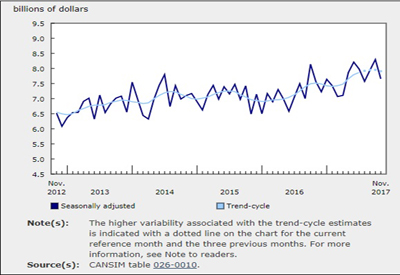Study: The Pandemic’s Impact on Corporate Solvency in Q3 2020

Jan 18, 2021
The year 2020 was filled with surprises. One of them was business solvency.
Insolvencies were down by almost one-third year over year during the early stages of the COVID-19 pandemic and were relatively stable in the third quarter. At the height of this century’s previous economic shocks, insolvencies rose by 10% or more. A new study looks at insolvencies during the largest economic upheaval of our lifetime.
Historically, insolvencies increase during economic downturns
The financial crisis of 2008 had an immediate impact on the number of insolvencies in Canada.* Insolvencies rose 11.3% in the fourth quarter of 2008 and reached a record high of 816 in the first quarter of 2009.
The 2014 oil crash also had a major economic impact on the Canadian economy, particularly in the oil patch. Oil prices (Western Canadian Select) fell from US$83 in July 2014 to US$37 in February 2015, and this affected businesses in oil and gas extraction and supporting industries. This was reflected in the number of insolvencies, which increased by one-quarter to 779 from the third to the fourth quarter of 2014.
Insolvencies buck the trend during the early stages of the pandemic
The pandemic has posed significant challenges to the Canadian economy and the financial position of enterprises. The second quarter of 2020 saw the steepest decline in real gross domestic product (-11.3%) since quarterly data were first collected in 1961. Over the same period, businesses reported lower net income before taxes (-8.6%) and operating revenues (-13.1%).
Despite the economic headwinds caused by the pandemic, insolvencies fell by almost one-third (-29.4%) year over year to 474 in the second quarter. This decline came at a time when many businesses were closed for a month or longer, and those that remained open faced a new and often more costly business reality. In the third quarter of 2020, the number of insolvencies was unchanged at 474, down 13.8% year over year.
Insolvencies were down in most industries in the second quarter, led by the construction industry (-32.1%, or -45). According to the Survey on the Canada Emergency Business Account, the construction industry had the largest share (14.1%) of loan approvals among industries in April and May through the Canada Emergency Business Account.
Most businesses that filed for insolvency in 2020 were already in trouble prior to the pandemic
The study also looks at the average quick and debt-to-equity ratios for businesses that filed for insolvency during the first three quarters of 2020 to better understand the financial position of these businesses.
The study suggests that businesses that filed for insolvency in 2020 were already in a precarious financial situation before the COVID-19 pandemic. Even with the help of government programs, these corporations decided to file for insolvency.
However, the fact that the number of insolvencies has decreased since the onset of the pandemic could indicate that businesses are waiting to see whether more government aid will be forthcoming and whether they will be able to manage their debt levels before filing for insolvency. Low borrowing costs for businesses could also partially explain this drop.
According to the Canadian Survey on Business Conditions, over two-fifths (43.9%) of businesses reported that they were unable to take on more debt in the third quarter. This suggests that insolvencies may increase in the coming quarters as the financial position of businesses deteriorates.
Source: Statistics Canada, www150.statcan.gc.ca/n1/daily-quotidien/210118/dq210118b-eng.htm?CMP=mstatcan
Photo by Melinda Gimpel https://unsplash.com/@melindagimpel Text on Unsplash
* This article examines the changes in the number of businesses that filed under the Bankruptcy and Insolvency Act and the Companies’ Creditors Arrangement Act from 2006 to the third quarter of 2020. The analysis highlights the number of firms filing for creditor protection, as well as the financial position of these firms before the onset of the pandemic. While this article focuses on smaller businesses filing under the Bankruptcy and Insolvency Act, the study on which it is based also looks at large corporations that filed under the Companies’ Creditors Arrangement Act.











